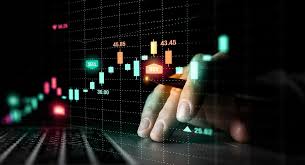
In the rapidly evolving world of cryptocurrency, where volatility reigns supreme, the demand for trading automation has surged. Traders are increasingly turning to automated systems to streamline their operations, reduce emotional decision-making, and capitalize on market opportunities. If you are interested in diving into this dynamic sphere, Trading Automation Crypto visit website to learn more about the tools that can aid your trading journey.
Trading automation refers to the use of computer algorithms and automated software to execute trades on behalf of a trader. These systems can analyze market data, identify trends, and make trading decisions based on predefined rules and strategies. By removing the human element from the trading equation, automation allows for quicker execution and the ability to monitor the market continuously.
Cryptocurrency markets operate 24/7, which makes it nearly impossible for individuals to monitor their assets at all times. The speed at which cryptocurrency prices can fluctuate further compounds this issue, making it essential for traders to employ strategies that can react to changes within milliseconds. Here are a few reasons why trading automation is critical for crypto traders:
To successfully implement trading automation, several components must be considered:
Your trading strategy forms the backbone of your automated system. A clear and well-defined strategy will dictate when to buy, sell, or hold assets based on specific conditions. Strategies can include but are not limited to:

Once the strategy is in place, the next step is to develop an algorithm that can execute trades based on your chosen methods. This can involve programming in languages such as Python or using platforms that provide built-in algorithmic trading functionalities.
Choosing the right trading platform is crucial. Look for platforms that offer robust API support, low latency, and ease of integration with your automated strategies. Popular choices among crypto traders include Binance, Coinbase Pro, and Kraken.
Automation does not eliminate risk. Implementing proper risk management strategies is vital to protecting your capital. This can include setting stop-loss orders, diversifying your portfolio, and limiting your exposure to any single asset.
While trading automation offers numerous benefits, it is essential to follow best practices to ensure success:
The landscape of trading automation in the crypto sector is set to evolve further. With advancements in machine learning and artificial intelligence, automated systems will become increasingly sophisticated, allowing for more complex strategy implementation and improved decision-making capabilities. Traders who embrace these technologies are likely to find themselves at an advantage in the competitive crypto market.
As we move forward into the era of crypto, trading automation will play a crucial role in how traders operate. By leveraging technology, individuals can optimize their trading strategies, limit emotional decision-making, and ultimately improve their profitability. Understanding the fundamentals of trading automation, along with staying updated on industry trends and best practices, will be key to thriving in this exciting market.
With the right approach and tools, trading automation can transform the way you trade crypto, giving you the efficiency and effectiveness needed to succeed in this fast-paced environment.